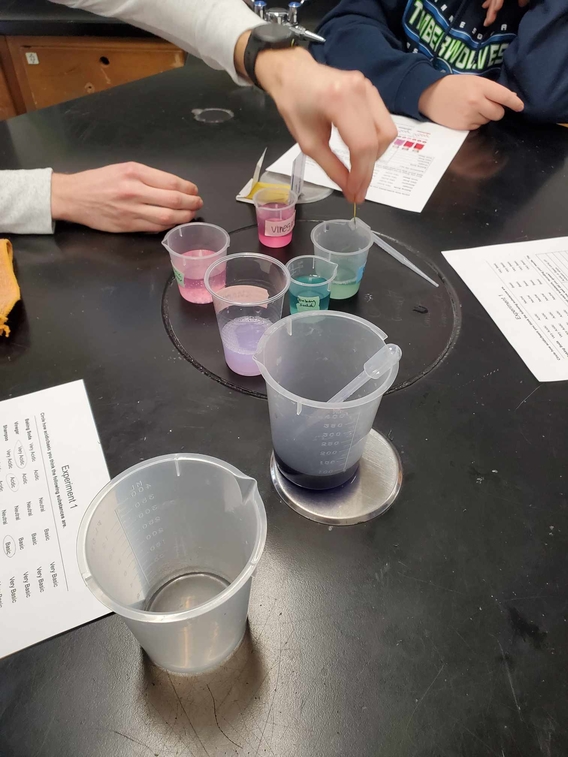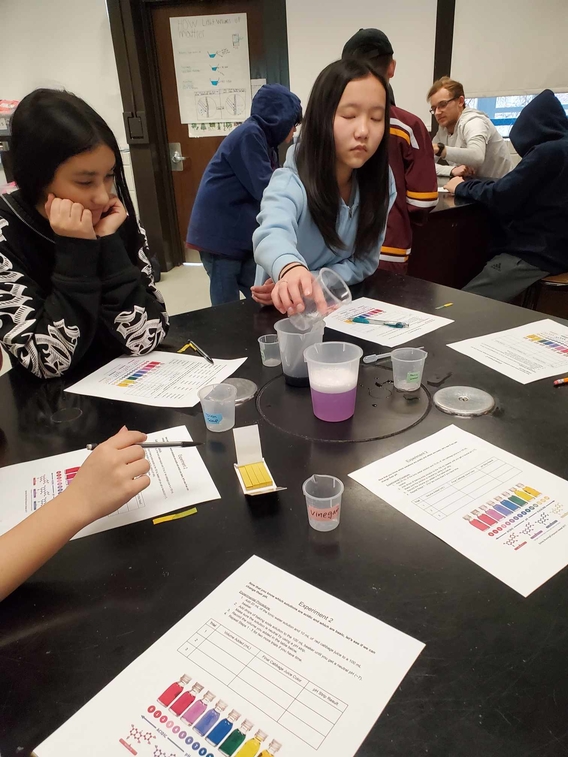February 2024 Visit on Friday, February 9, 2024
Experiment Leads: Dzifa Kwaku and Kristine Loh
To begin this year's series of visits, we dived into the world of ocean acidification, guided by Kristine and Dzifa. Together, they talked through the details of acidification origins and explored the practical aspects of measuring acidity using the pH scale. The exploration began with a video, shedding light on the connection between human activities and the consequential ocean acidification, particularly fueled by the burning of fossil fuels which release carbon dioxide into the environment. This cinematic introduction served as a reminder of the significant role we play in preserving our environment.

Before immersing themselves in hands-on experiments, students speculated on the acidity levels of various solutions. Equipped with knowledge about measuring hydrogen ions using universal pH indicators or anthocyanin-rich plant extracts, they were ready to turn their hypotheses into tangible results. Choosing red cabbage juice as their pH indicator, students ventured on a visually striking journey, testing the pH of common household items. The colors from this natural indicator brought an expressive flair to the learning experience. To optimize their measurements, the students used a universal indicator, enhancing the precision of their experiments.
Amidst the experimentation, students also probed into the concept of neutralization. They monitored the color modification of the pH indicators as they mixed acidic and basic solutions to achieve a neutral pH level of 7 (purple solution). The ocean acidification experiment not only expanded the students' scientific understanding but also instilled a sense of responsibility toward our environment. Through expressive experimentation and interactive learning, students realized that science is more than just a subject; it's a dynamic tool empowering them to make informed decisions and contribute to a sustainable future.
